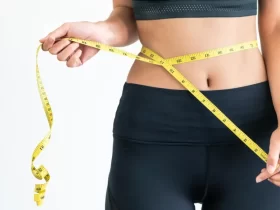Do you want to start a keto diet but still want to know more about the number of carbs you’re allowed to eat?
Sounds familiar? Well, don’t worry.
We have the answers you need so you can start a keto diet and feel satisfied while losing weight. You’ll learn more about low-carb diets!
Read on to discover the answer to “how many carbs can you have on the keto diet?”
How Does the Keto Diet Work?
The keto diet is a high-fat, low-carbohydrate diet that forces the body to burn fat for fuel instead of carbohydrates. This metabolic state is known as ketosis. Keto dieters eat few or no carbohydrates, moderate amounts of protein, and high levels of healthy fats.
The diet is typically divided into two phases: the induction phase and the maintenance phase. The induction phase, which typically lasts for two weeks, jumpstarts the body’s process of ketosis. The maintenance phase helps the body maintain a state of ketosis and prevents weight gain.
A keto diet guide is powerful for weight loss and improved cholesterol levels, blood sugar control, and blood pressure.
Carbs and the Keto Diet: How Many Carbs Can You Have on the Keto Diet?
How many carbs can you have? The answer depends on several factors, including your age, activity level, and how long you have been on a diet.
If you can keep your daily carbohydrate consumption between 20 and 50 grams, you’ll be well on leading a healthier lifestyle.
How to Count Carbs on the Keto Diet
To know how many carbs you can intake on the keto diet, it’s essential to understand how to count carbs. There are two main ways to count carbs: net carbs and total carbs.
Net carbs are absorbed by your body, while total carbs include net carbs and indigestible fibers. When counting carbs, it’s essential to be as accurate as possible to ensure you’re staying within your carb limit.
Engaging with a Registered Dietitian or Certified Diabetes Educator who can help you construct a personalized plan to figure out your own unique carb intake goals is advisable. They will be able to guide you in creating this plan.
Carbs You Can Eat
It’s important to remember that the ketogenic diet restricts your food options. Here are some food options to consider.
Low-Carb Vegetables
Starch is the type of sugar that is stored in vegetables. Vegetables that are not starchy retain less sugar, and as a result, they have a minimal amount of starch and carbohydrates. Because of their low-calorie count, high fiber content, and increased nutrient density, they are the ideal carb source for those following a ketogenic diet.
Among low-carb veggies are cauliflower, zucchini, spinach, brussels sprouts, kale, and broccoli.
A significant carbohydrate concentration known as fiber in many vegetables does not include starch. Unlike other carbohydrates, fiber is not digested, so it’s not turned into glucose or sugar.
Fiber doesn’t count toward the daily carbohydrate limit. Fiber is tallied against total carbohydrate grams, so remember this while reading nutrition labels.
Berries
Because of their very high carbohydrate content, the vast majority of other fruits will need to be avoided. Berries are the only exception to this rule. Berries are a great source of fiber and contain relatively few carbohydrates.
These fruits are loaded with antioxidants, which have anti-inflammatory properties.
Olives
Olives are an excellent source of carbs while following the ketogenic diet because fiber makes up about half of their total carbohydrate content. Olives contain only 1 gram of carbs for every 14 grams consumed. This indicates that approximately seven olives equal one gram of carbohydrates.
Avocados
Avocados contain few carbs as well. The ketogenic diet should include avocados as a regular part of everyone’s eating plan. They are an excellent source of monounsaturated fat and have a high concentration of necessary micronutrients, such as potassium and magnesium.
You refill your body with the critical minerals it excretes during the initial fat-adaptation stage by eating avocados, so the keto-adaptation phase is much simpler. Because avocados have roughly 2-3g of net carbohydrates per serving, they’re the perfect fruit for those on a ketogenic diet.
Cocoa Powder
Cocoa Powder and dark chocolate are included in the foods containing low carbohydrates. Consuming cocoa powder or dark chocolate is a much healthier option than eating sugar-filled chocolate bars.
These foods provide a significant amount of antioxidants when consumed. Chocolate is so rich in beneficial elements that it’s even dubbed a “superfood” in some circles.
Flavanols are another component of dark chocolate and have been shown to lower blood pressure, reducing the chance of developing cardiovascular disease.
It is essential to ensure that the dark chocolate you consume has a cocoa content of 85% or more. Anything less than that typically contains other substances that are higher in carbohydrates and have the potential to disrupt ketosis.
However, if you want to add sweetness to your food or beverage, it might help you if you will find the best keto sweetener to add some sweetness to it.
Shirataki Noodles
If you are fond of noodles, shirataki noodles are low in carbohydrates. People on the ketogenic diet who miss eating pasta should try shirataki noodles. Because of the high proportion of water and fiber in these noodles, their carbohydrate content is less than 1 gram.
You may purchase them in health food stores made with fettuccine, linguine, or rice. Substitute shirataki noodles for pasta to produce a low-carb meal.
Thinking of Starting the Keto Diet?
The keto diet is a great way to lose weight, but you must be careful about how many carbs you eat. Too many carbs can lead to weight gain and health problems. Try to limit your carb intake to 20-50 grams per day, and you’ll be on your way to a healthier lifestyle.
We hope your question of “how many carbs can you have on the keto diet?” has been answered after reading this post.
Did you find this post helpful? If so, check out the other posts on our website.











